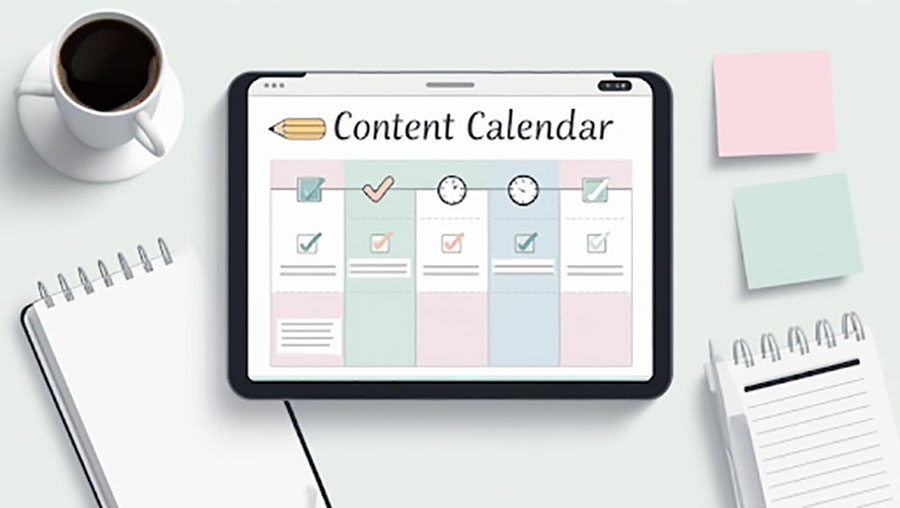Search engines have changed the rules. Years ago, you could publish a few solid pages, add some backlinks, and see results for months or even years. That model doesn’t hold anymore. Today, SEO success demands something faster, sharper, and far more active: content velocity.
Content velocity SEO focuses on the pace and consistency of content production. It’s about how frequently a brand creates and publishes useful, relevant, and up-to-date content that meets current search demand. In a digital environment where algorithms reward timeliness and consistency, businesses that increase their content velocity tend to outperform those that sit still.
This post dives into the practical side of content velocity: why it works, how it influences SEO performance, and how to build a system that helps you stay competitive.
What Content Velocity Really Means
Content velocity measures how much content your website pushes out over a given period. Think of it as your publishing pulse: how active, alive, and responsive your site appears to search engines and users.
Publishing more content isn’t the whole story. What truly makes an impact is:
- Volume: How much content is published weekly or monthly.
- Frequency: How regularly content goes live.
- Consistency: How reliably your content schedule is maintained.
- Relevance: How well the content matches what people are searching for right now.
This approach tells Google that your site is not static. It shows that your business is engaged, current, and adding value. That’s a strong signal in 2025’s ranking algorithms, which heavily favor topical relevance and real-time value.
Why Google Cares About Freshness
Google’s job is to deliver the best possible result for every search. That means providing answers that are not only accurate but also current. The search engine prioritizes content that reflects what’s happening right now, because that’s what users expect.
Think about it: when someone searches for the best marketing tools, they don’t want a list from 2019. They want one that includes today’s options. The same goes for health tips, tech news, or investment advice. Outdated content can easily become irrelevant or, worse, misleading.
Fresh content sends a strong signal to Google. It tells the algorithm your site is active, that your information reflects the present, and that users can trust it. This can directly influence how your pages perform in search rankings.
Enhance Your Brand Visibility with The Ad Firm
- SEO: Enhance your online presence with our advanced SEO tactics designed for long-term success.
- Content Marketing: Tell your brand’s story through compelling content that engages and retains customers.
- Web Design: Design visually appealing and user-friendly websites that stand out in your industry.
Here’s how freshness affects key areas of SEO:
1. Better Ranking Opportunities
When you publish new or updated content, it tells search engines your site is engaged. Google may give that page an initial bump in rankings, especially for time-sensitive queries. If the page gets clicks, engagement, and positive signals from users, it can hold that position long-term.
This effect is often seen with news articles, reviews, product comparisons, and how-to guides. Even if your competitors already rank well, a timely, well-optimized update can give your version the edge, especially if theirs hasn’t been touched in a while.
2. Improved Click-Through Rates
Searchers judge results by more than just titles. The date stamp plays a role too. If users see two similar results and one is dated last week while the other is from two years ago, they’ll likely choose the newer one. It feels more trustworthy.
Click-through rate is one of the behavioral signals Google watches. The more clicks your fresh content gets, the more relevant it appears to the algorithm. That reinforces its position in search results and improves its chances of staying near the top.
3. Longer On-Site Engagement
Fresh content keeps people browsing. When a visitor notices that your blog, resources, or help center have been updated recently, it sets a tone of credibility. It tells them someone is actively maintaining the site.
That leads to longer sessions, more pageviews, and higher chances of return visits. If your site looks current and the content feels relevant, users are more likely to dig deeper. That matters for both brand trust and SEO performance.
4. More Frequent Crawling
Search engines allocate crawl resources based on activity. If your site regularly updates content or publishes new pages, Googlebot is more likely to visit often. That means your changes get picked up and indexed faster.
On the other hand, if your content sits untouched for months, crawling slows down. This delay can hurt your ability to react to trends, fix outdated information, or compete for newly popular keywords. Regular publishing keeps you in the algorithm’s spotlight.
READ ALSO: Unlocking Quick SEO Wins with Google Search Console: A Step-by-Step Guide
Where Freshness Matters Most
Not every page on your site needs to be updated all the time. But for topics where accuracy, trends, or fast-moving developments are involved, freshness is essential.
Maximize Your Online Impact with The Ad Firm
- Local SEO: Capture the local market with strategic SEO techniques that drive foot traffic and online sales.
- Digital PR: Boost your brand’s image with strategic digital PR that connects and resonates with your audience.
- PPC: Implement targeted PPC campaigns that effectively convert interest into action.
Examples include:
- Industry news and analysis
- Product reviews or comparisons
- “Best of” lists and recommendations
- Financial, medical, or legal guidance
- SEO, marketing, and tech topics
For these kinds of content, even a six-month-old post may feel outdated. Users want answers that reflect the latest tools, data, or standards. If your content doesn’t offer that, it loses both trust and relevance.
Updating Content: The Secret Weapon
Many businesses overlook one of the easiest ways to improve freshness: updating what they already have. Adding a new blog post is great, but refining a high-performing article from last year can deliver even better results.
When updating content, focus on:
- Replacing outdated statistics or tools
- Adding new insights or perspectives
- Rewriting sections for clarity
- Improving internal links to new pages
- Fixing broken links or formatting issues
Make the update meaningful. Google can detect when content changes are minor or superficial. When done right, an updated article can regain or even surpass its original ranking.
How to Increase Content Velocity Without Burning Out
Publishing more content doesn’t mean lowering quality. It requires smarter planning and better systems. Here’s how to increase content output without sacrificing consistency or depth.
1. Create a Content Calendar That Works
Set realistic publishing goals based on your team’s capacity. Start with weekly targets. For example:
- Week 1: New blog post + content refresh
- Week 2: Industry roundup + updated FAQ section
- Week 3: Case study + new service page
- Week 4: Two blog posts + one infographic
Stay consistent. Whether you publish twice a week or once every ten days, reliability matters more than speed.
2. Build a Mix of Evergreen and Timely Content
Evergreen content (how-tos, definitions, guides) stays relevant for years. Timely content (trend reports, news analysis) taps into what people are searching for right now. You need both.
A balanced calendar will keep your traffic steady while allowing spikes when a hot topic hits.
3. Use Internal Linking to Strengthen Your Site
Every time you publish something new, find 2–3 related pages on your site to link to. This strengthens topic authority, spreads link equity, and signals to Google that your content network is robust and active.
Advance Your Digital Reach with The Ad Firm
- Local SEO: Dominate your local market and attract more customers with targeted local SEO strategies.
- PPC: Use precise PPC management to draw high-quality traffic and boost your leads effectively.
- Content Marketing: Create and distribute valuable, relevant content that captivates your audience and builds authority.
4. Streamline Workflows With Templates
Create templates for different types of content—how-to guides, listicles, landing pages, and newsletters. These reduce the time needed to start from scratch and help maintain consistency across your site.
5. Monitor Performance and Optimize
Check which types of content bring the most traffic and conversions. Double down on those formats and topics. Content velocity is not just about output volume—it’s about improving what works and dropping what doesn’t.
SEO Isn’t Static, Your Content Can’t Be Either
Stagnant content reflects a stagnant brand. It signals to both users and search engines that nothing new is happening. High content velocity shows that your business is aware, responsive, and in tune with the market.
Even the best-written guide from two years ago will lose relevance if it’s never revisited. Competitors who publish weekly updates, respond to new search trends, and engage with current questions will eventually outrank you.
This is why investing in a consistent content strategy, one that includes frequent publishing, regular updating, and intentional optimization, is more important than ever.




